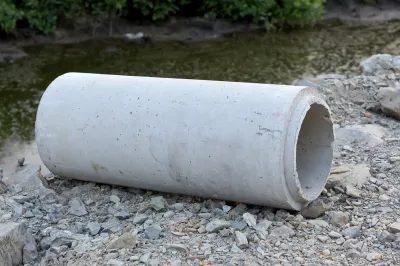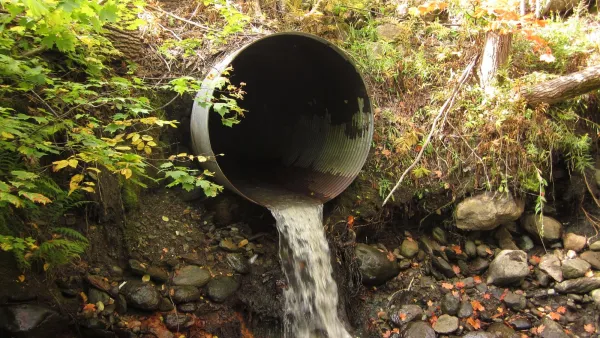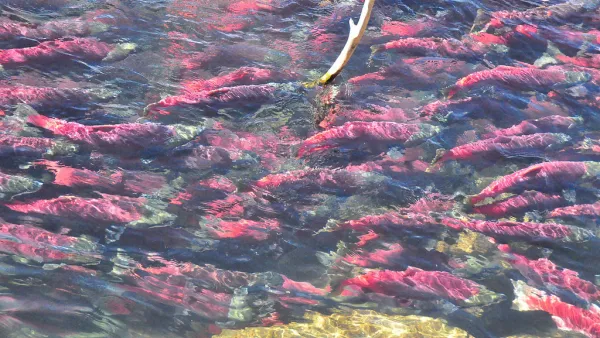Ineffective, blocked, obsolete, and in disrepair—Washington is full of culverts that pose an impediment to the survival of salmon. A court decision should have fixed the problem, but the state's budget has a long way to go to clean up the mess.

An article by KUOW takes a closer look at the engineering of culverts (i.e., the "metal pipes or concrete boxes that carry streams beneath the roadbed") in the Pacific Northwest—the source of perhaps a surprising amount of controversy after lawsuits and a historic court decision by the 9th U.S. Circuit Court of Appeals.
The article takes a tour of the Skagit River Valley in Washington with Steve Hinton, director of habitat restoration for the Swinomish Tribal Community and the Sauk-Suiattle Tribe. Examples of problematic culverts include those that are too small, "constricting the creek and making the current too fast for a fish to swim against," others that are "filled with sediment, leaving no room for fish," and some that have eroded, leaving "a lip of concrete that looks like a knife’s edge almost — a broken knife’s edge."
In total, according to the article, there are "between 30,000 and 40,000 culverts in the state of Washington that block fish as they try to get upstream." The state is responsible for 2,000 of that total.
"In his proposed budget, Washington Gov. Jay Inslee included about $700 million for culvert repair over the next 16 years," according to the article, but tribal and wildlife advocates say that's far from enough. Dean Moon, the fish passage manager for the Washington Department of Transportation, is quoted in the article saying that will correct about 170 culverts. "The state would need to repair three times that many culverts in order to give salmon access to 90 percent of the upstream habitat that’s currently blocked," adds the article.
FULL STORY: Making Sure Salmon Can Cross (Under) The Roads In Washington

Analysis: Cybertruck Fatality Rate Far Exceeds That of Ford Pinto
The Tesla Cybertruck was recalled seven times last year.

National Parks Layoffs Will Cause Communities to Lose Billions
Thousands of essential park workers were laid off this week, just before the busy spring break season.

Retro-silient?: America’s First “Eco-burb,” The Woodlands Turns 50
A master-planned community north of Houston offers lessons on green infrastructure and resilient design, but falls short of its founder’s lofty affordability and walkability goals.

Test News Post 1
This is a summary

Analysis: Cybertruck Fatality Rate Far Exceeds That of Ford Pinto
The Tesla Cybertruck was recalled seven times last year.

Test News Headline 46
Test for the image on the front page.
Urban Design for Planners 1: Software Tools
This six-course series explores essential urban design concepts using open source software and equips planners with the tools they need to participate fully in the urban design process.
Planning for Universal Design
Learn the tools for implementing Universal Design in planning regulations.
EMC Planning Group, Inc.
Planetizen
Planetizen
Mpact (formerly Rail~Volution)
Great Falls Development Authority, Inc.
HUDs Office of Policy Development and Research
NYU Wagner Graduate School of Public Service




























